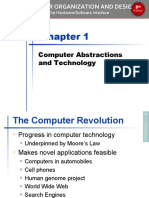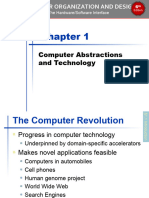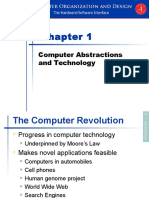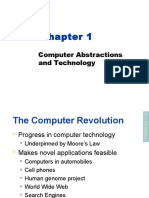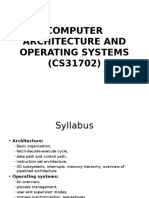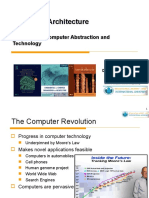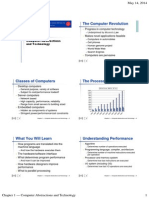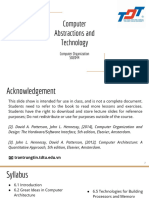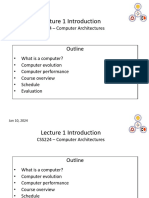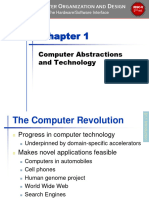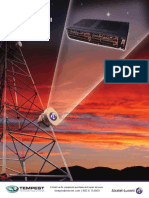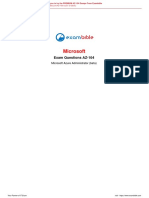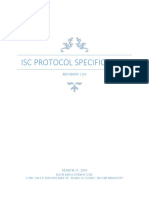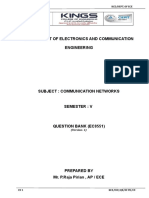0% found this document useful (0 votes)
77 views53 pagesComputer Architecture
The document provides an overview of computer architecture and technology. It discusses Moore's Law and the rapid growth in the number of transistors that can be placed on an integrated circuit. It also describes the evolution of computers from early vacuum tube based systems to modern personal computers, servers, supercomputers, and embedded systems. The document outlines the different levels of program code from high-level languages to machine code and discusses computer components and performance.
Uploaded by
Tommy LeCopyright
© © All Rights Reserved
We take content rights seriously. If you suspect this is your content, claim it here.
Available Formats
Download as PDF, TXT or read online on Scribd
0% found this document useful (0 votes)
77 views53 pagesComputer Architecture
The document provides an overview of computer architecture and technology. It discusses Moore's Law and the rapid growth in the number of transistors that can be placed on an integrated circuit. It also describes the evolution of computers from early vacuum tube based systems to modern personal computers, servers, supercomputers, and embedded systems. The document outlines the different levels of program code from high-level languages to machine code and discusses computer components and performance.
Uploaded by
Tommy LeCopyright
© © All Rights Reserved
We take content rights seriously. If you suspect this is your content, claim it here.
Available Formats
Download as PDF, TXT or read online on Scribd
/ 53

